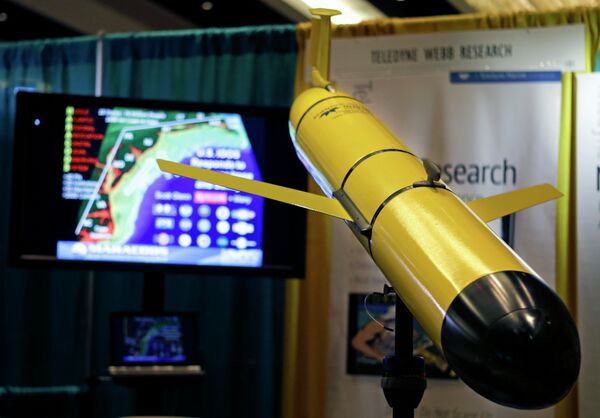According to DARPA Director Arati Prabhakar, the Agency is trying to approach military technology needs with a new perspective, after having focused primarily on assets for ground wars in the past 14 years. The UFP program will therefore be one of several other research projects DARPA will focus on as a means of revolutionizing the US Military’s maritime strategy.
What DARPA envisions is having a number of drones planted on the ocean floor in locations where geopolitical hostility is possible, readily available for launch whenever needed. The drone, housing sensors and non-lethal weapons, would lie dormant in the ocean until it is remotely triggered by the US Navy, and sent to the surface for use.
With a budget of $63 million over the next four years, UFP is in phase two of development, with plans set for testing the designs in water later this year. According to Walker, the project faces several key technological challenges. Specifically, the Agency will have to figure out how the UAV can be remotely triggered to launch, how to get it to “upwardly fall” to the surface, and how to maintain and protect the system under water for more than a year. Walker added that researchers will be going out to the ocean to test various technologies in the hopes of creating a functioning system.
The project will be supported by a number of defense contractors, including The Boeing Co., Global Aerospace Corp., Sparton Electronics, General Dynamics Corp., and Lockheed Martin.

The US Navy has used drones in the past, although most, like the Slocum Gliders, are used for transmitting weather and surveillance data. Until UFP, ocean-faring drones have paled in comparison to their aerial counterparts, as they do not operate on fuel and instead rely on ocean currents for propulsion and their buoyancy to shift direction. DARPA’s UFP project will mark the first time ocean-based drones will be used as weapons, and above sea level.
President Obama requested a $3 billion budget for DARPA for fiscal year 2016, a slight increase over previous years. The Agency’s report outlines a number of ambitious projects to pursue over this time, focusing on four areas: Rethink Complex Military Systems; Master the Information Explosion; Harness Biology as Technology; and Expand the Technological Frontier.
"The reason we’re able to have this big impact is because we work with and tap the resources of a vast technological ecosystem," Prabhakar said in a press briefing. "Much is done with universities and companies of every stripe – defense contractors, but also commercial companies as small as startups and as big as major firms."



